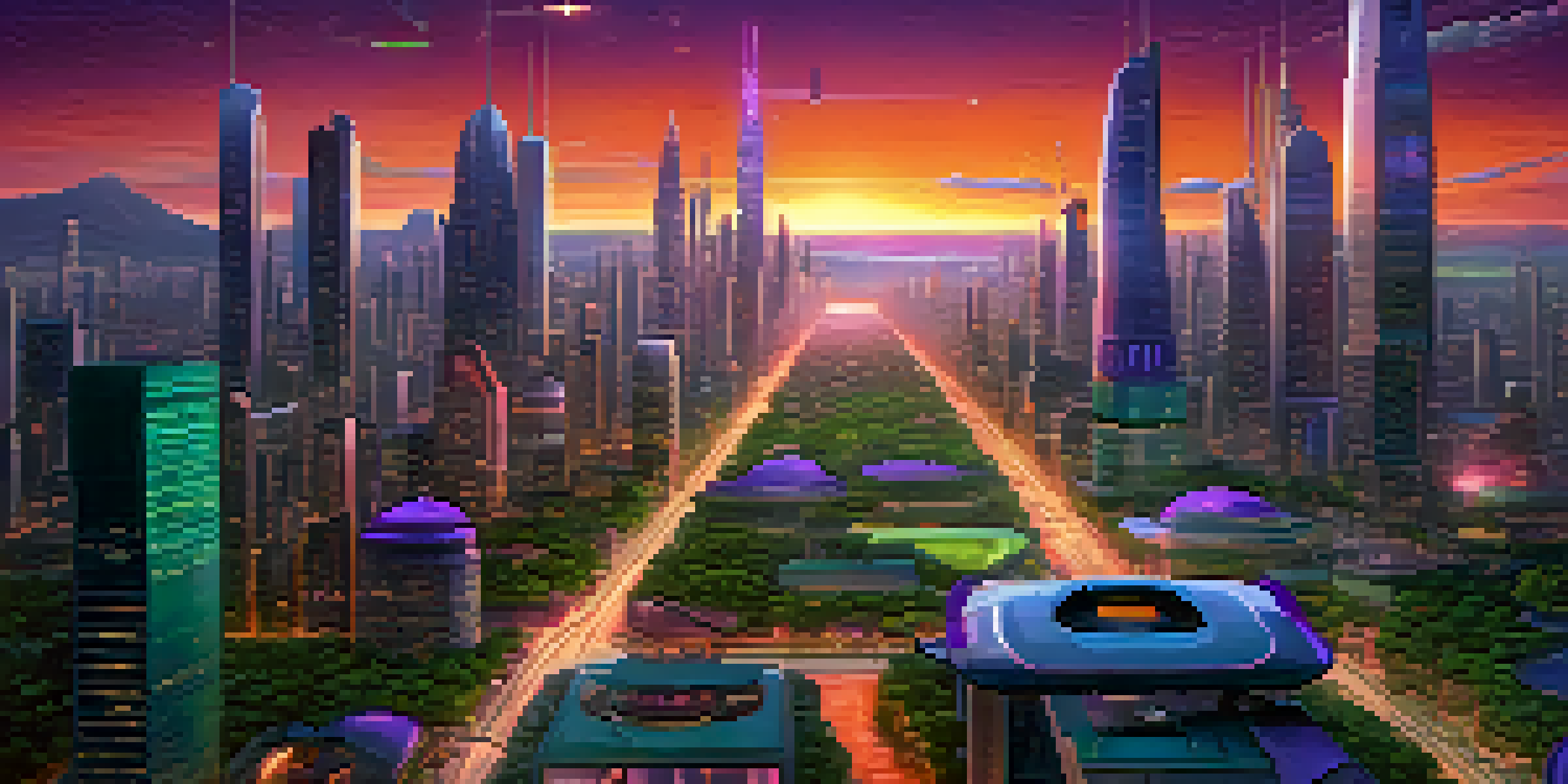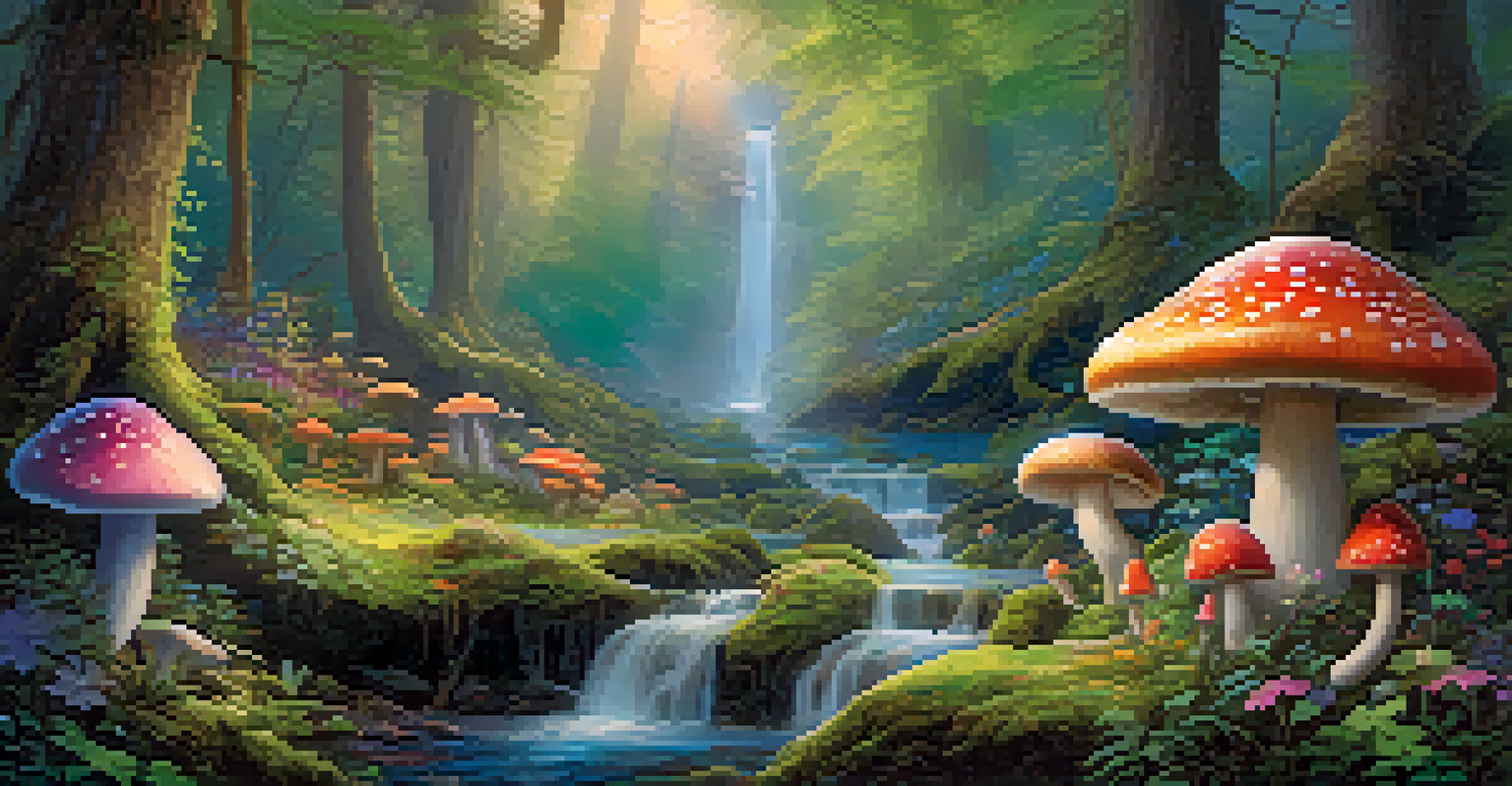The Role of CGI in Transforming Visual Storytelling Techniques

Understanding CGI and Its Rise in Film and Media
Computer-generated imagery (CGI) refers to the creation of still or animated visual content using computer software. It has become a cornerstone of modern filmmaking, allowing creators to visualize concepts that would be impossible or too costly to achieve with traditional methods. From animated movies to blockbuster action films, CGI plays a pivotal role in bringing stories to life.
The art challenges the technology, and the technology inspires the art.
The rise of CGI can be traced back to the late 20th century when films like 'Jurassic Park' and 'Toy Story' showcased its potential. These films not only pushed technological boundaries but also captivated audiences with visually stunning narratives. Today, CGI allows filmmakers to create entire worlds, giving rise to genres that blend reality with imagination.
As technology continues to evolve, CGI becomes more sophisticated, enabling artists to produce hyper-realistic visuals. This evolution has transformed storytelling techniques, allowing for deeper emotional connections and more immersive experiences for viewers.
How CGI Enhances Visual Storytelling Techniques
CGI enhances visual storytelling by offering limitless possibilities for creativity. Imagine a fantasy world filled with mythical creatures or a futuristic cityscape; CGI enables storytellers to craft these intricate settings without the constraints of physical locations. This freedom allows for stories that can take viewers on adventures beyond their wildest dreams.

Moreover, CGI can be used to evoke specific emotions through visual cues. For example, the sweeping landscapes in 'Avatar' not only served as a backdrop but also amplified the narrative's themes of connection and harmony with nature. Such visual storytelling techniques create a rich tapestry that resonates deeply with audiences.
CGI Transforms Modern Filmmaking
Computer-generated imagery revolutionizes the film industry by enabling the creation of stunning visuals and immersive worlds that were once unimaginable.
In addition to creating environments, CGI also enhances character design and development. Characters can be brought to life in ways that reflect their personalities and arcs, enhancing the overall storytelling experience. This blend of art and technology allows for more relatable and memorable characters.
The Role of CGI in Animation and Live-Action Films
CGI plays a crucial role in both animation and live-action films, bridging the gap between the two. In animated films, CGI is the foundation, allowing for expressive characters and vibrant worlds. Movies like 'Frozen' showcase how CGI can enhance storytelling, making animated tales feel more immersive and emotionally resonant.
Animation is not the art of drawings that move but the art of movements that are drawn.
In live-action films, CGI is used to create effects that would be impossible to film practically. Think of the breathtaking visual effects in 'The Avengers' or the digitally rendered creatures in 'Jurassic World.' These elements not only add excitement but also help to tell a more cohesive story, as they seamlessly integrate into the live-action framework.
This blending of CGI with live-action has opened new avenues for filmmakers, resulting in innovative storytelling techniques. The ability to combine real actors with CGI elements creates a unique viewing experience that captivates audiences and expands the potential for narrative exploration.
CGI's Influence on Audience Engagement and Experience
One of the most significant impacts of CGI is its ability to enhance audience engagement. Visually stunning effects draw viewers into the story, making them feel like active participants in the narrative. This sense of immersion can transform a passive viewing experience into an interactive one, where audiences are emotionally invested in the characters and plot.
For instance, the use of CGI in films like 'Gravity' or 'Interstellar' creates a sense of realism that keeps viewers on the edge of their seats. The breathtaking visuals and intense scenarios evoke strong emotions, resulting in a memorable cinematic experience. This heightened engagement is a testament to the power of CGI in storytelling.
Enhancing Emotional Engagement
CGI enhances storytelling by evoking emotions through visual cues, making audiences feel more connected to the characters and narratives.
Furthermore, CGI allows for the exploration of complex themes and ideas. By visualizing abstract concepts, filmmakers can communicate messages that resonate deeply with audiences, making the story not just entertaining but also thought-provoking.
Innovations in CGI: Virtual Reality and Beyond
The innovation of CGI has given rise to exciting new technologies, such as virtual reality (VR). VR immerses users in a 3D environment, allowing them to experience stories in an entirely new way. With CGI as its backbone, VR storytelling creates experiences that feel personal and interactive, transforming how narratives are consumed.
Games and interactive media have begun to adopt these technologies, offering players a chance to step into the shoes of their favorite characters. This level of engagement allows audiences to influence the storyline, making them feel like co-creators of the narrative. It’s a remarkable shift that showcases the potential of CGI beyond traditional storytelling.
As these technologies continue to advance, they promise to reshape visual storytelling even further. The blending of CGI with immersive experiences hints at a future where stories can be felt, touched, and lived, rather than just watched.
Challenges and Limitations of CGI in Storytelling
Despite its many advantages, CGI also presents challenges in storytelling. One significant concern is the risk of over-reliance on visual effects, which can detract from character development and plot depth. When filmmakers prioritize flashy visuals over a compelling narrative, the emotional impact can be diminished, leaving audiences feeling disconnected from the story.
Additionally, there are limitations in terms of budget and technology access. Not all filmmakers have the resources to create high-quality CGI, which can lead to inconsistencies in visual quality. This disparity can affect how stories are perceived and may limit the opportunities for creative expression in less-funded projects.
Future Innovations in CGI
Emerging technologies like artificial intelligence are set to further enhance CGI, making it more accessible and allowing for diverse storytelling.
It’s essential for creators to strike a balance between CGI and traditional storytelling elements. By ensuring that visuals complement rather than overshadow the narrative, filmmakers can harness the power of CGI while maintaining the heart of the story.
The Future of CGI in Visual Storytelling
As technology continues to evolve, the future of CGI in visual storytelling looks promising. Emerging technologies like artificial intelligence and machine learning are beginning to influence how CGI is created and used. These advancements could lead to even more realistic visuals and streamlined production processes, opening up new storytelling possibilities.
Moreover, the growing accessibility of CGI tools is empowering a new generation of storytellers. Independent filmmakers and content creators can now harness these technologies to bring their unique stories to life, democratizing the filmmaking process. This shift could lead to a richer diversity of narratives and perspectives in visual storytelling.

Ultimately, the future of CGI is about collaboration and imagination. As artists, technologists, and audiences continue to engage with this medium, we can expect to see innovative stories that push the boundaries of what’s possible, making visual storytelling more dynamic and exciting than ever.